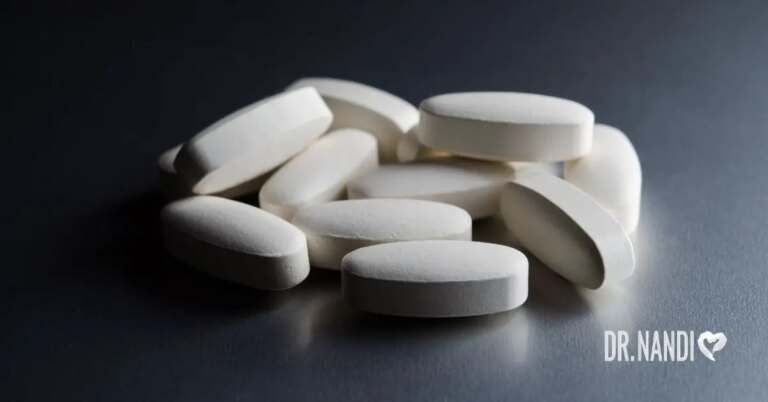Did you know that the seemingly harmless dryer sheets you use every day could be endangering your health? While the scent of freshly laundered clothes may be comforting, the truth is that dryer sheets contain a cocktail of toxic chemicals that can have serious implications for your well-being.
In fact, scientific research has revealed alarming statistics linking these chemicals to various health issues. This article delves into the hidden dangers of dryer sheets, shedding light on their toxic substances and providing safer alternatives for a healthier laundry routine. Alarmingly, these toxic elements may also be lurking elsewhere in your home, including your kitchen.
Study: Unmasking the Toxicity of Dryer Sheets
A groundbreaking study led by University of Washington Professor Anne Steinemann, Ph.D., revealed the disturbing truth about dryer sheets. The study analyzed the chemicals emitted from dryer vents after using scented fabric softening and dryer sheets in clean washers and dryers. The results were concerning.
The researchers detected three hazardous air pollutants and 10 volatile organic compounds (VOCs), including acetaldehyde and benzene. These substances, known to be unsafe at any level, are not only carcinogens but also pose significant risks to the kidneys, nervous system, and respiratory system.
Steinemann’s study also found that 12.5% of people attributed health issues such as respiratory problems, skin irritations, and even gastrointestinal symptoms to scented laundry products emitted from dryer vents. These findings highlight the urgent need to address the potential harm caused by dryer sheets and seek safer alternatives. [1,2]
Dryer Sheets: The Facts Based on Scientific Studies
When you examine a box of dryer sheets, you’re unlikely to find a comprehensive list of the chemicals they contain. Shockingly, the United States Consumer Product Safety Commission does not mandate manufacturers to disclose the actual ingredients, including those used in fragrance blends. This lack of transparency raises concerns about the potential dangers associated with these products.
To understand the true extent of the problem, scientists have conducted studies on dryer sheets and dryer vent exhaust, uncovering the following compounds that may be toxic and detrimental to your health.

- Carcinogenic Hazardous Air Pollutants
A study revealed that 44% of scented laundry products tested emitted at least one carcinogenic hazardous air pollutant, including acetaldehyde, 1,4-dioxane, and formaldehyde. Exposure to these substances poses a significant risk to human health. [3]
- Synthetic Fragrances and Respiratory Issues
Synthetic scents in laundry products have been linked to migraines, asthma attacks, eye and throat irritation, and contact dermatitis.[4,5,6] Furthermore, a study conducted on mice found that fabric-softening products triggered limited airflow and pulmonary irritation in the animals. [7]
- Higher Health Risks
Studies indicate that a significant portion of the US population has experienced health issues related to scented laundry products emitted from dryer vents, and those people with certain conditions are more vulnerable. In 2009, nearly 11% of US respondents reported irritation from these scents. More alarmingly, asthmatic individuals are revealed to be more likely to experience negative health effects, with 64.3% reporting respiratory issues, migraine, and asthma attacks as the common complaints. [8,9]
- Hormone Disruptors and Asthma Triggers
Research conducted by the Silent Spring Institute discovered that dryer sheets contain high concentrations of harmful fragrance chemicals, some of which are hormone disruptors and asthma triggers. These compounds include acetyl hexamethyl tetralin, isobornyl acetate, and phenethyl alcohol. [10]
Toxic Chemicals Lurking in Dryer Sheets
Dryer sheets often contain toxic chemicals that can pose risks to your health and the environment. Here are some of the commonly found substances in dryer sheets and their potential effects:
- Quaternary Ammonium Compounds: These compounds are frequently present in dryer sheets and can trigger asthma attacks and reproductive toxicity in animals. [11,12]
- Acetone: Found in dryer sheets, acetone has the potential to cause dizziness and headaches. [11]
- Environmental Impact: Dryer sheets with toxic compounds can have adverse effects on wildlife and water bodies. Certain fabric softening compounds used in dryer sheets are considered toxic to animals, emphasizing the need for eco-friendly alternatives. [13]

My Personal RX: Safer Alternatives to Dryer Sheets
Fortunately, there are several alternatives to dryer sheets that can help you maintain a healthier laundry routine without compromising on freshness or softness. Consider the following options:
- White Vinegar: Add a quarter cup of white vinegar to your washer’s rinse cycle to naturally reduce static cling.
- Plant-Based, Unscented Laundry Detergents: Look for plant-based, unscented laundry detergents or make your own using unscented castile soap.
- Air Drying: Hang your clothing outside to dry, not only eliminating the need for dryer sheets but also reducing your energy bill.
- Wool Dryer Balls: These reusable balls not only soften fabrics but also help reduce drying time. For a light, natural fragrance, add a few drops of organic, therapeutic-grade peppermint essential oil to the balls.
- Fragrance-Free Laundry Practices: Lobby your workplace, apartment complex, and neighbors to adopt fragrance-free laundry practices to protect the health of everyone in your community and workplace.
- Download my free Toxic Ingredient Guide to learn more about the toxic ingredients in our products and to help you make better choices to limit your exposure.
- I strongly recommend adding a daily supplement, like my Liver Support, to your daily regimen. In our modern environment, our livers endure continuous strain as they work to eliminate toxins, including chemicals from dryer sheets and harmful compounds in our food. Liver Support is specifically formulated to boost liver health and actively support both Phase I and Phase II liver detoxification processes. By incorporating Liver Support into your routine, you can enhance your liver’s well-being and ensure it remains in optimal condition for efficient detoxification.
Dryer sheets, once considered a harmless part of the laundry routine, have now come under scrutiny due to the toxic chemicals they contain. The alarming statistics and scientific studies presented in this article highlight the potential health risks associated with using dryer sheets. It is crucial to prioritize your well-being and explore safer alternatives to protect yourself and the environment. By adopting preventive measures and incorporating natural alternatives into your laundry routine, you can ensure a healthier and more sustainable approach to fresh, clean clothes.

References:
- Steinemann, A. (2009). Fragranced consumer products and undisclosed ingredients. Environmental Impact Assessment Review, 29(1), 32–38. https://doi.org/10.1016/j.eiar.2008.05.002
- Steinemann, A. (2019). Ten questions concerning fragrance-free policies and indoor environments. Building and Environment, 159, 106054. https://doi.org/10.1016/j.buildenv.2019.03.052
- Steinemann, A., MacGregor, I., Gordon, S. M., Gallagher, L. G., Davis, A. J., Ribeiro, D. A., & Wallace, L. (2011). Fragranced consumer products: Chemicals emitted, ingredients unlisted. Environmental Impact Assessment Review, 31(3), 328–333. https://doi.org/10.1016/j.eiar.2010.08.002
- Caress, S. M., & Steinemann, A. C. (2005). National prevalence of asthma and chemical hypersensitivity: an examination of potential overlap. Journal of occupational and environmental medicine, 47(5), 518–522. https://doi.org/10.1097/01.jom.0000161736.54099.44
- Johansen J. D. (2003). Fragrance contact allergy: a clinical review. American journal of clinical dermatology, 4(11), 789–798. https://doi.org/10.2165/00128071-200304110-00006
- Millqvist, E., & Löwhagen, O. (1996). Placebo-controlled challenges with perfume in patients with asthma-like symptoms. Allergy, 51(6), 434–439. https://doi.org/10.1111/j.1398-9995.1996.tb04644.x
- Anderson, R. C., & Anderson, J. H. (2000). Respiratory toxicity of fabric softener emissions. Journal of toxicology and environmental health. Part A, 60(2), 121–136. https://doi.org/10.1080/009841000156538
- Caress, S. M., & Steinemann, A. C. (2009). Prevalence of fragrance sensitivity in the American population. Journal of environmental health, 71(7), 46–50. https://pubmed.ncbi.nlm.nih.gov/19326669/
- Steinemann A. (2018). Fragranced consumer products: effects on asthmatics. Air quality, atmosphere, & health, 11(1), 3–9. https://doi.org/10.1007/s11869-017-0536-2
- Dodson, R. E., Nishioka, M., Standley, L. J., Perovich, L. J., Brody, J. G., & Rudel, R. A. (2012). Endocrine disruptors and asthma-associated chemicals in consumer products. Environmental health perspectives, 120(7), 935–943. https://doi.org/10.1289/ehp.1104052
- EcoWatch. (2022, November 29). Why You Need to Ditch Dryer Sheets. EcoWatch. https://www.ecowatch.com/why-you-need-to-ditch-dryer-sheets-1881714654.html
- EWG’s Guide to Healthy Cleaning. (n.d.). EWG. https://www.ewg.org/guides/substance_groups/58-Cationicfabricsofteners/
- EWG’s Guide to Healthy Cleaning. (n.d.-b). EWG. https://www.ewg.org/guides/substance_groups/39-Quaternaryammoniumcompounds/




















